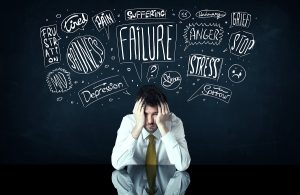What is Mindsight? An Interview with Dr. Dan Siegel
In the following interview, Dr. Dan Siegel discusses and defines the fundamental theory of Mindsight as a way to focus the mind on the nature of the internal world.
These exclusive video clips are part of a featured interview series with Dr. Dan Siegel, an expert in the theory of Mindsight, an empowering action-oriented way of describing the power of the mind to actually change the structure and function of the brain.
WHAT IS MINDSIGHT?
Mindsight is the way we can focus attention on the nature of the internal world. It’s how we focus our awareness on ourselves, so our own thoughts and feelings, and it’s how we’re able to actually focus on the internal world of someone else. So at a very minimum, it’s how we have insight into ourselves, and empathy for others. But Mindsight is more than just an understanding, Mindsight gives us the tools to monitor the internal world with more clarity and depth, and also to modify that internal world with more power and strength. So in all these ways, Mindsight is a construct that’s a bit larger than insight. It’s even larger than mindfulness, because it’s really not just about being present moment to moment, but it’s about being present so you monitor what’s going on, but then modify what’s happening.
So it’s an empowering action-oriented way of describing the power of the mind to actually change the structure and function of the brain. That you aren’t prisoner to the synaptic legacy that you had because you had these experiences that got shaped. With Mindsight you can actually alter the course of your life because you become awakened to the power of attention to actually integrate areas that weren’t integrated before.And when we modify the internal world we can move it from chaotic ways of being and rigid ways of being to more harmonious function. And this way that we move the mind toward health is exactly what Mindsight allows us to do. It’s a way of really taking a mind and awakening it to the fact that you aren’t just a passive participant in life, but can be an active captain of your own ship. This is how you become an author of the owned story of your life.
DEVELOPING AND IMPROVING YOUR MINDSIGHT
When we understand that the mind can change the brain itself, we become empowered to actually transform our lives. And when we look from a mindsight point of view at how we can deeply know what’s happening in our brains, when we can look very clearly at what’s happening in our relationships, what happens is we’re able to actually see patterns where we’re stuck in life. For example, we keep on doing the same thing over and over again, like becoming rigid. Or we may find that there are patterns in our lives where life has become chaotic. We have outbursts of emotion, or impulsive behaviors.
These two banks, if you will, outside of a river, of rigidity on the one hand, and chaos on the other, help us know when something is missing. And that something is called integration. And when we’re integrated, when we link different parts of our internal world and our relationships, we’re in the flow of a river that has the sense of harmony, it’s flexible, it’s adaptive, it has a coherence to it that holds together, and that’s energized and stable. Mindsight is the ability for us to see within ourselves, to dive deeply into the sea inside. The way we develop mindsight is through our relationships with our parents, initially. Parents reflect to us what they see going on in our inner world, not just noticing our behaviors but, for example, reflecting to us about our feelings, what we might be thinking, remembering, perceiving. All of these are ways we get signals back from our caregivers that help us see the internal world with clarity.
But what’s not known is the scientific finding that when parents don’t provide clear feedback then the lens of mindsight becomes distorted. We may not be able to see within ourselves, or within other people, if our parents have been very distant emotionally. Or if our parents are intrusive, what can happen is the mindsight lens becomes very distorted by the responses of others. So when someone feels something it floods us and we’re chaotically involved in their own emotional response. So rather than knowing ourselves we just become confused as to who we are and who they are.
In still other kinds of relationships, called ‘attachment’ between children and their parents, we may have been terrified. And in these examples we become disorganized and our mindsight lens fragments. So in moments of stress we may literally disassociate the way we’re thinking from how we’re feeling. We may have different aspects of ourselves that get shut down and shut off. And in these ways what happens is we are fragmenting our internal world.
For other children when their parents are a source of terror they have the experience of what’s called disorganized attachment. And there the mindsight lens becomes fragmented. And as that child grows into adolescence and adulthood, under stress, things can become very disassociated. They can disconnect from their own bodily sensations, and fragmented in how they think.
And in all these different ways our attachment experiences with our caregivers shape the lens through which we see the internal world of ourselves and others.
The fantastic news is that when we make sense of our own lives we can actually strengthen the mindsight lens so that it’s not distorted, that it’s not fragmented, that it’s not shut down. That instead it’s clear, strong, and gives us an acuity of how we see the internal world. And by giving us an acuity, what it means is it gives us a sense of wisdom about what the internal world is.
YOU CAN CHANGE YOUR BRAIN
Contrary to what we used to believe we now know that the brain is open to change throughout the lifespan. And what some people don’t realize is that not only can the brain change, but we can learn to use the focus of the mind to actually change the connections in the brain itself. You might ask, “How in the world could attention change something like the physical structure of the brain?” And answering this question is exactly the way we illuminate a path toward wellbeing. Because the brain gets set up by our genes, from something we call “temperament”, and also by just chance. But then our experiences actually sculpt synaptic connections in the brain itself. But here’s the key: that when neurons fire you can get them to rewire. And experience stimulates neurons, the basic cells of the brain, to fire in particular patterns.
One form of experience that we now know shapes neuronal firing, and also synaptic growth – changes in the growth of the connections among the neurons – is how we focus attention. And amazingly when you learn to focus your attention on the nature of the mind itself, you actually can rewire important parts of the brain that help regulate how your entire nervous system functions – so, for example, how your body regulates itself, how you balance your emotions – and also how you engage in relationships with other people. It also changes the way you relate to someone very close to you, how you relate to yourself.
This reflective ability I call ‘Mindsight’, and it’s how you can learn to use the focus of your attention on the mind itself to actually transform the connections in the brain, to move the brain to a more integrated, harmonious way of functioning. That’s the promise of Mindsight. And in the Mindsight approach we see the brain as not just limited to what’s in the skull but actually an extended nervous system that is the mechanism by which energy and information flows. So when we look at this connection among mind, brain and relationships, we become empowered actually to move our lives from unhealth to health.
And this can be called the triangle of wellbeing. We can learn to promote relationships that enhance our lives. We can help the brain move from states of dysfunction, where it’s rigid or chaotic, to states of harmony that emerge from something we call neural integration. And integration is where we take different parts and link them together.
And then the mind itself, how we regulate energy and information flow, can be something that we learn to master and become in many ways, the captain of our own ship, where we actually instead of just riding things and being passive as a participant to just see where the mind takes us, we actually can become empowered to move our minds in a way that is healthy, enriching, and creates a much more flexible way of living.
UNDERSTANDING THE BRAIN
Knowing about the brain can empower our lives. And for some people they say “Well why, why would knowing about the brain matter at all?” The brain is important to know about because getting insight into the mechanism by which all of this energy and information is flowing can actually help us understanding everyday events.
I’ll give you an example. If I yawn (yawns), like that, what did you notice you felt? Now you may have felt like you wanted to yawn. And there’s an understanding of the brain that can help us illuminate how that happens. Now watch this. (makes motions with his hands.) Did you feel anything with that? Now, maybe not. But now see how you feel when I do this. (pauses, takes a drink of water.) Now what did you notice? Well for some people they may notice they feel thirsty or they want to get up and get a drink. Or when I yawn you may want to yawn.
What we now know is that in the brain there is a set of neurons called mirror neurons. A mirror, which is something that reflects your own image, is the word that was used for these neurons that were found to allow you to take a perception that you see, for example seeing me drink some water, when you know it has an intention behind it, and getting you ready to do that same behavior. So when someone yawns (yawns) you get ready to yawn. So we have behavioral imitation are enabled by these mirror neurons. But also something we call internal simulation. You may have actually felt thirsty when you saw me drinking. This is the way we basically can feel another person’s feelings. Mirror neurons are the gateway to compassion and the gateway to empathy.
INTEGRATION – A SOURCE OF STRENGTH
In looking at mindsight as a way of strengthening the mind there’s the very important concept of integration. But what I was really interested in was what was a fundamental definition of mental health, not just a description. And what became clear in a number of ways of looking at it – from a scientific point of view, a clinical point of view, a societal point of view, was looking at something called integration. And integration is defined as the linkage of differentiated parts, so you allow separate things to become specialized in what they do in a system, and then you connect them to each other.
And when a system becomes integrated amazingly it moves toward a harmonious flow. It becomes flexible and adaptive. You have a sense of connection and openness. Harmony. There’s a sense of emergence, something is new, and it’s engaged. It’s receptive to new things. This is a quality that you can feel when you hear a choir sing, that the singers are each allowed to be different, but then they link together.That vitality of harmony is what the subjective experience of integration is.
So in the mindsight approach what we do is identify eight domains of integration, and walk through step by step what are the ways integration can be promoted. So there’s something called the integration of consciousness where you develop the capacity to sense the activities of the mind with more clarity and alter them with more strength. There’s something called bilateral integration where you link the very different functions of the left side of the brain to that of the right. You also find vertical integration where you allow the consciousness experience of the cortex at the top of the brain to be linked to the areas below, like the limbic area, the brainstem, the body itself.
And other forms of integration we go into are memory integration, to explore what is memory, how do we know who we are, how do we remember what we’ve experienced and create the autobiographical files that we have in our heads, how do we do that? And then the related one is narrative integration, how do we actually weave the stories of our lives, because research has clearly shown that if you make sense of our life your own life will have new vitality to it, and the way you interact with others, including your lovers, your friends, family members, your own children. All of these relationships will be improved when you’ve made sense of your life.
Other forms of integration include something called state integration, realizing we have different states of being, and how these link to each other. So within one state you can feel very conflicted, and finding integration within a state is important, and also knowing that for example I have one state that wants to be alone and another state that wants to be social. Finding time for these many, many states that we have that compose a self, is a part of state integration. The last two forms are the interpersonal integration that is how we relate to each other in compassionate and supportive ways. And then finally something called temporal integration, which is how do we embrace the deepest existential issues of ways in which people struggle with wanting certainty but life being uncertain, wanting things to be permanent but nothing is permanent in life, and also wanting immortality but all face mortality. And those are what temporal integration embraces. And then when people explore and develop these areas of integration, a ninth domain emerges called transpirational integration, where people begin to have an expanded sense of self.
They begin to feel part of a much larger whole, and the beautiful part about that is that people begin to feel a deeper sense of meaning in life. And kindness through transpiration becomes something that’s as natural as breathing. And can you imagine what the world would be like if we all promoted integration within ourselves, and helped cultivate that in others. What a harmonious new transformative world we might be able to have. That’s the promise of mindsight and I hope you’ll join me for the journey into the sea inside.
Compassion in this way is used for how we feel another person’s feelings, how you can feel felt by someone else, the most important part of our relationships with one another. Empathy is how you have a mindsight map, an image in your mind of what’s going on inside the mind of someone else. And this is basically how you create it. The mirror neurons soak in like a sponge what you see in someone else, it takes it in, it resonates with your own internal bodily responses and emotional parts of your brain respond. It comes back up to the middle part of your front most part of your cortex, the outer part of your brain called the prefrontal cortex, and allows you to create an image of your own bodily state, and then imagine what’s going on in someone else.
That whole process is basically the circuitry of compassion. And we can actually teach ourselves how to do that, how to use mirror neurons to benefit our lives by developing this ability to see the mind, “mindsight,” to develop that when we haven’t developed it so well as children or, even if we’ve developed it, to improve it now as adults. It’s always possible to improve these circuits of compassion, and to stimulate the growth of this capacity for empathy and kindness in our lives.
[SlideDeck2 id=13287]
Tags: dan siegel, Dr. Dan Siegel, mindfulness, mindsight, neuroscience, self-awareness, self-limiting behaviors, self-understanding








Dear Dr. Dan Siegel, thanks a lot for these articles, I’ve reading you book “The Whole-Brain Child” and it’s amazing that both of you (with Tina Payne), give us thoughtful insights in a simple way of explanation. I’ve found most valuable the strategies you present in that book. I have a ten years old kid, and we are living a chaotic season. We: myself, my wife and my son are disintegrated people, moving between the anger and frustration and rigid the most of the time. So I’m finding good advices in your book. Thank you.
Excellent subject- Mindsight. I am interested to have more knowledge.
I appreciate the smilpe way that you explain mindsight. It makes it easy for me to understand and easy for me to explain it to clients and interns. Thank you!
when was this article published? super insightful
[…] What is Mindsight? An Interview with Dr. Dan Siegel – Psychalive […]